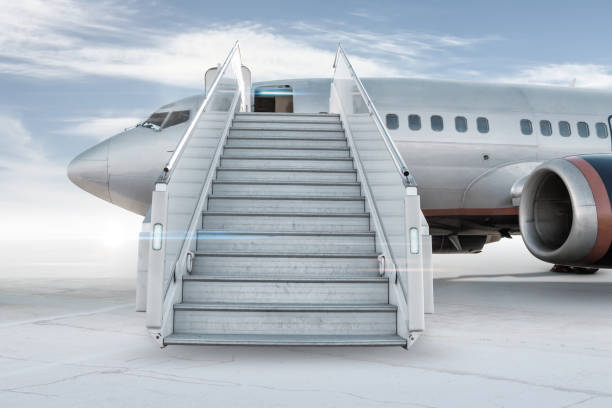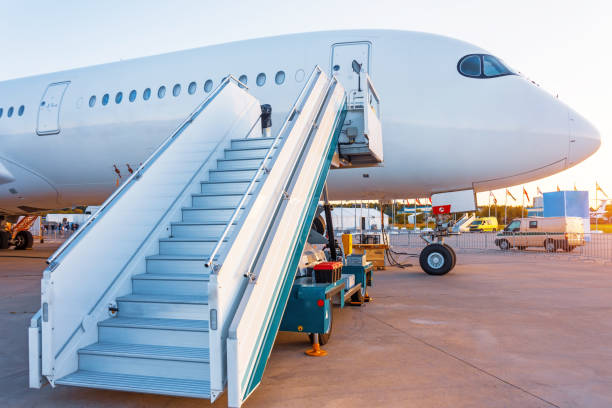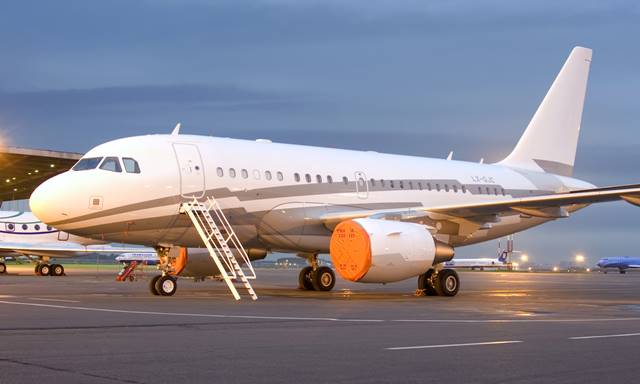If you’ve ever watched an airplane being prepared for boarding, you’ve likely noticed the sturdy stairs leading up to the aircraft’s entrance. These aircraft stairs serve a crucial purpose beyond just providing a pathway for passengers. In this article, we will delve into the numerous benefits of installing Benefits of Installing Aeroplane Stairs, shedding light on their functionality and significance within the aviation industry.
Ensuring Passenger Safety
1. Safe Boarding and Deboarding: Aeroplane stairs are designed with passenger safety in mind. They offer a stable and secure platform for passengers to embark and disembark from the aircraft.
2. Emergency Evacuation : In emergency situations, such as an evacuation, aeroplane stairs provide an alternate exit route, ensuring the safety of passengers and crew.
Accessibility and Convenience
3. Accessibility : Benefits of Installing Aeroplane Stairs make it easier for passengers with reduced mobility to access the aircraft, enhancing inclusivity in air travel.
4. Efficient Disembarkation : Stairs allow passengers to disembark from both the front and rear of the aircraft simultaneously, reducing turnaround times.

Versatility
5. Remote Airports : Stairs are particularly valuable at remote airports without jet bridges, enabling passengers to board and disembark comfortably.
6. Multiple Aircraft Types : These stairs can be adapted to serve a variety of aircraft, making them a versatile solution for airlines.
Cost-Efficiency (H1)
7. Eliminating Rental Costs: Airlines that own their Benefits of Installing Aeroplane Stairs can save on rental expenses, contributing to cost-efficiency.
8. Reduced Maintenance Costs: Modern aeroplane stairs are designed for durability, minimizing maintenance and replacement costs.
Environmental Impact (H1)
9. Energy-Efficient Lighting: Some aeroplane stairs are equipped with energy-efficient lighting, reducing the environmental footprint of airports.
10. Reduced Emissions: Shorter turnaround times facilitated by aeroplane stairs can lead to reduced aircraft emissions.
Enhanced Security
11. Controlled Access: Benefits of Installing Aeroplane Stairs provide controlled access to the aircraft, enhancing security measures.
12. On-Ground Services: Security personnel can easily monitor the aircraft and its surroundings from the stairs.
Improved Passenger Experience
13. Unobstructed Views : Passengers ascending the stairs often enjoy panoramic views of the airport, enhancing the travel experience.
14. Sense of Adventure: Boarding via aeroplane stairs can evoke a sense of adventure and excitement for passengers.

Conclusion
In conclusion, Benefits of Installing Aeroplane Stairs play a multifaceted role in aviation, offering benefits that extend beyond their functional purpose. From ensuring passenger safety and accessibility to cost-efficiency and environmental considerations, these stairs are an integral part of air travel infrastructure. Their versatility, cost-effectiveness, and positive impact on the passenger experience make them an indispensable component of airport operations.
FAQs
Are aeroplane stairs always used, or do airports prefer jet bridges?
Aeroplane stairs are commonly used at smaller airports or for specific aircraft, while larger airports often employ jet bridges for convenience and efficiency.
Can aeroplane stairs be used during bad weather conditions?
Yes, aeroplane stairs are designed to be used in various weather conditions, including rain and snow, to ensure passenger safety.
Do passengers with disabilities have access to aeroplane stairs?
Yes, airports are equipped with special equipment and assistance services to accommodate passengers with disabilities when using aeroplane stairs.
Are there regulations governing the design and maintenance of aeroplane stairs?
Yes, aviation authorities have stringent regulations in place to ensure the safety and quality of aeroplane stairs.
How do aeroplane stairs contribute to shorter turnaround times?
Aeroplane stairs allow passengers to board and disembark simultaneously, reducing the time it takes for an aircraft to prepare for its next flight.


